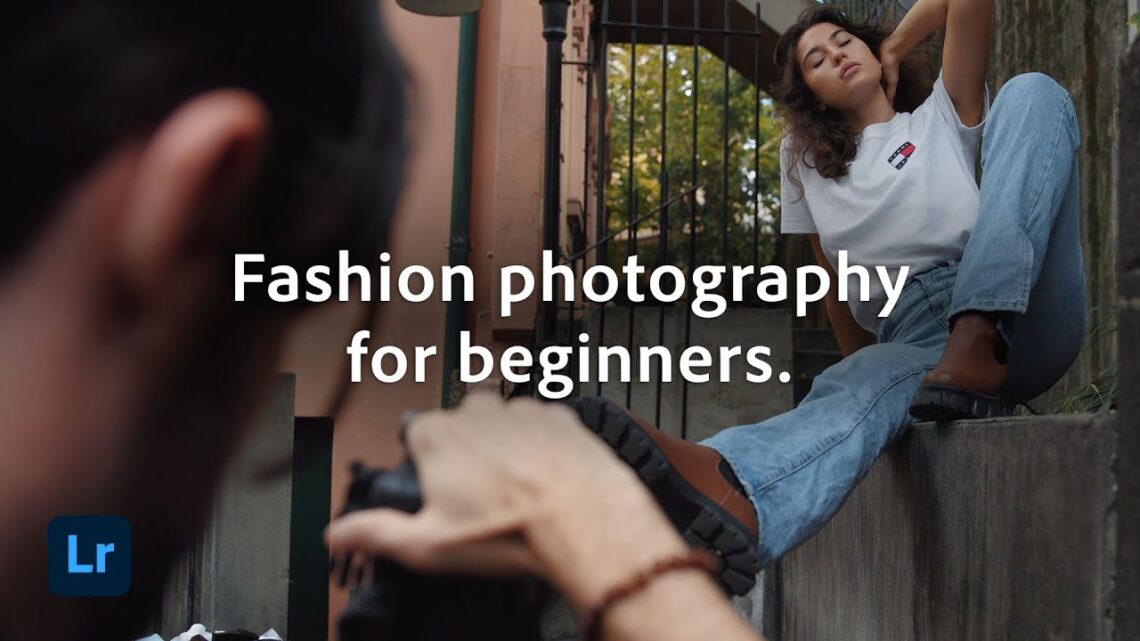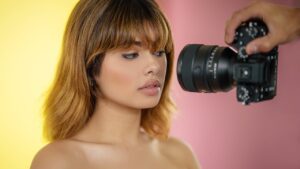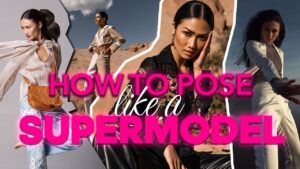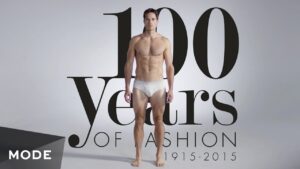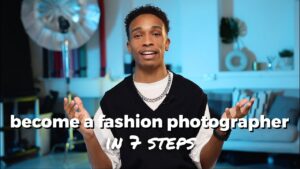Fashion photography is about style, and the best photographers have their own unique look. If you look through magazines like Elle, Harper’s Bazaar or Vogue, they all have a distinct feel. These photographers don’t need the newest equipment, or the most famous models. They are known and discovered for their talent and their style.
It’s important to have a clear idea of what you want your images to look like before starting a fashion shoot. This will help you avoid any surprises when it comes to retouching or editing your photos. It will also ensure that everyone involved in the shoot is on the same page and knows what needs to be done.
There are different kinds of fashion photography, and the type you choose will depend on what kind of images you need. For example, if you need to take product shots of clothes for a magazine’s online or print catalog, your fashion photography will probably involve a simple setup with one light and a reflector or two lights in a studio against a white or gray background. However, if you need to make a look book for a fashion house, this will probably require more of a production and might be shot on location.
This is a highly creative form of fashion photography and it requires more of a sense of imagination than the other types of fashion photography. It may be done on location or in a studio, and it often involves the use of props or other accessories to add to the overall look and feel of the picture. It is sometimes used for fashion editorials, and it can be a lot of fun to do.
Many fashion photographers start their careers as assistants to established fashion photographers. This is a great way to learn the ropes and gain experience in the field before trying to get your own clients. It’s also a good way to meet other fashion photographers and find out about new trends in the industry.
Some kinds of fashion photography require a large production and the use of top models or celebrities. This can be a lot of fun to do, and it can also be challenging. The best way to get started with this kind of fashion photography is to find inspiration on social media or in a magazine. There are plenty of curated accounts on Instagram that will give you ideas for your next fashion shoot.
The more moving parts there are in a fashion photo shoot, the more likely it is that something will go wrong. This is why it’s important to have a plan of action and to work with a team of people who are familiar with the process. The more experienced members of your team will be able to handle any problems that come up during the shoot, so that you don’t have to worry about them.
Fashion photographers need to have a lot of creativity and know their equipment well. They also need to be able to visualize the final image in their mind’s eye before shooting it. This is a very difficult skill to master, but it’s a critical part of the job.
Model Photography Poses and Their Variations
Model photography poses are a staple for any fashion shoot. They help create a natural and effortless look for the subject and can be adapted to a variety of settings from clean white walls to gritty rollar shutters. Here are some of the most popular model poses and their variations that can be used to add a touch of glamour, drama or playfulness to any image.
The Leaning Pose
One of the most simple and versatile model pose ideas is to have your subject stand with one leg slightly forward, and one hand resting on a wall or railing. This is a classic model pose that works for almost any gender, age or size of model. The legs can be a little wider than usual to make the model appear more balanced and is especially good for creating a feminine look in female escorts. It also helps to draw the viewer’s attention to the face by creating a leading line with the hands and arms.
The Hands-on-Hip Pose
The hand on hip pose is another classic model pose that can be used in a wide variety of styles from boudoir to high fashion. It’s particularly good for highlighting a woman’s shape and works well when the model is wearing lingerie or something similarly feminine. The pose can be made more dramatic by having the model lean back on one arm and twist their torso to give a more elongated look to the neck. The hand on the hip pose can be a little boring if your subject is looking directly into the camera, so it’s worth playing around with pointing their chin up or down to get different expressions.
Standing with One Foot Behind the Other
Standing with one foot behind the other is a classic model pose that can be used in boudoir, high fashion and even commercial images. It’s easy to adapt this pose to fit any type of wardrobe and is ideal for showing off footwear or accessories. It can also be used to elongate the legs by having the model bend at the knees and place their weight on one foot. This is a great pose for younger models as it can be very comfortable and makes it easy to stand still for long periods of time.
The Head-on-Body Pose
The head-on-body pose is a good model pose for close-ups of the face and can be done with any facial expression. It can also be used to show off a woman’s figure and looks particularly effective when the hair is down and pulled away from the face.
Model Poses in Movement
The best way to add some interest and drama to a model shot is to have them move around a bit. This will help to avoid the dreaded model posing blank stare that can plague so many images. This can be as simple as turning the head, raising or lowering the chin, moving the arms or crossing the legs. Alternatively, if your model is dressed in something that allows it, having them walk or run toward the camera can be an excellent way to capture motion shots and a sense of energy.
Photography Techniques
Photography involves the use of light to capture a scene. It also requires an artistic eye and a good understanding of composition. If these aspects are off, the photograph will be ruined. There are many different Photography techniques that can be used. Some are more technical, such as using a tripod and taking multiple exposures. Others, such as the rule of thirds and contrast, are more compositional.
In photography, contrast is the difference between bright and dark areas of the image. Contrast can be created in a variety of ways, including tonal contrast and colour contrast. It can also be created by contrasting textures and shapes. Including contrast in a photo can help to make it more interesting and attractive.
The rule of thirds is a compositional rule that states that the subject of a photo should be placed off-center rather than centered in the frame. This technique is particularly effective for landscapes and other static scenes. It helps to draw the viewer into the image and can create a sense of movement that is not possible with a centered photograph. Many digital cameras and even cell phones have a feature that can help you achieve this effect by displaying a grid over your viewfinder.
Using a flash to project lights, shapes or colours onto a surface is another way of adding dimension and interest to a photograph. This can be done with almost any type of background or object, and can be extremely effective in portrait photography. It can even be used to create abstract body art. Some photographers use projectors to cast shapes and patterns on their models, which can be a fun alternative to the traditional green screen.
One of the most important factors in Photography is the quality of the light. If you don’t have enough, or the right kind, of light, then your photos will be dull and uninspiring. If you’re shooting outdoors, it may be necessary to wait for better lighting conditions or move your subject.
Many people tend to keep their horizon lines level in photographs, but this can be boring. By lowering the horizon line, you can add drama to your photos and highlight features of the landscape such as mountains, rivers or lakes.
You can also add a unique look to your photographs by creating borders. This can be done by placing your camera close to fences or wires, or by moving a part of the subject’s body to create blurs. This is a great way to add an extra creative element to your photos and to tell a story within them. You can also experiment with different shutter speeds to create different types of blurs. For example, you could try taking a picture of flowing water with a very slow shutter speed. Alternatively, you can take a picture of a person holding a hand up to their face with a fast shutter speed. You could then play with the image in Photoshop to create a more artistic and unusual effect.
Fashion Industry Photography
Fashion industry photography is the artistic and commercial practice of capturing images of clothing that will be featured in magazines, newspapers or online. It involves a variety of technical skills including lighting, post-production editing and collaborating with designers, models, hairstylists and makeup artists to create a polished final image. Fashion photographers are usually skilled at using multiple channels within Photoshop, which helps them to adjust colors, retouch imperfections and add or remove items to achieve their desired aesthetic.
One of the key functions of fashion industry photography is promoting the latest fashion trends. The rise of social media has helped to make this even more prominent, as followers are able to see the latest looks from their favorite creators in a matter of seconds. It is important for fashion photographers to keep up with these trends in order to stay relevant within the industry.
In addition to promoting the latest trends, fashion photographers also use their work to show off their creative vision. This can be achieved through using a variety of styles and techniques, including high-fashion editorial shooting, which showcases the latest designer clothing pieces in beautiful and creative settings.
Another popular style of fashion photography is streetstyle, which takes inspiration from the way that people dress in their everyday lives. This can be done either in a natural, candid manner or through a more staged photoshoot that gives the appearance of being authentic.
A great way to enhance the appeal of a fashion shoot is through the use of professional lighting. Fashion photographers are often skilled at using various types of lights to highlight the features of their models, as well as to create specific moods or tones in the final image. They may also experiment with different lighting intensities and angles in order to achieve their desired look.
As a form of art, fashion has always been influenced by culture and society, and it is the responsibility of fashion photographers to capture this connection. They must take into consideration what is happening in the world at that time and what is currently popular, then connect that to the clothing that they are showcasing.
Fashion photographers must be able to collaborate and communicate effectively with their team members. This includes coordinating all aspects of a fashion shoot, from location scouting to model casting and hair and makeup arrangements. They must also be able to work closely with retouchers and other professionals in order to ensure that all of the elements are aligned with the overall concept and vision for the shoot. They must be able to assess the results of their efforts and ensure that they are meeting the client’s requirements. Fashion photographers must also have a wide range of equipment to be able to perform their job properly, as well as the knowledge and experience required to create a polished final image. This can include a range of lenses, filters, tripods and other accessories.
Model Photo Editing Tips
Model photo editing involves the removal of blemishes, marks, and other unwanted elements from an image. The process requires skill and practice to produce a professional-looking result. However, by following a few basic model photo editing tips, you can easily edit images and achieve the desired look. The tips in this article are designed with popular image editing programs in mind, but can be applied to any program.
Start by adjusting the white balance. A bluish or yellow tint in photos can ruin their overall look. It is also important to adjust the lighting and color of an image to create a pleasing look.
Next, remove any blemishes and stains on the model’s skin using the Spot Healing Brush tool. You can also use the Clone Stamp tool to retouch the skin and make it smooth and flawless. Lastly, clean up the image by removing dust particles and other small details from the background.
When it comes to model photo editing, you need to work in layers. This will help you avoid mistakes and save time because you can edit or remove one layer without affecting the other layers. Additionally, you can use layers to hide or show different parts of the image if necessary.
In addition to retouching the skin, you should also smooth out any creases in the clothes and hair. You can do this by using a variety of tools, such as the Clone Stamp and Spot Healing Brush tools. You should also use the Color Adjustment tool to improve the colors of the image.
One of the most common mistakes in model photo editing is overdoing the skin tone. This can cause the model’s skin to look unnatural and plastic. To avoid this, you should use a light touch and apply the tool sparingly.
If you are not confident enough to perform model photo editing yourself, you can always outsource it to a professional service provider. This will not only save you time, but will also help you get high-quality results at a fraction of the cost. A professional service will have years of experience and can offer a wide range of services.
Whether you need high-end retouching or simple model editing, a professional service can handle it all. You can even sign up for a free trial to see how their services can benefit you.
Models often come across images that could have been much better only if they were free of any distractions. These might be objects, clothing, or props that steal the focus from the subject. These can be removed in a number of ways, but the best method is to simply desaturate them. This will ensure that all the attention is on your model.
